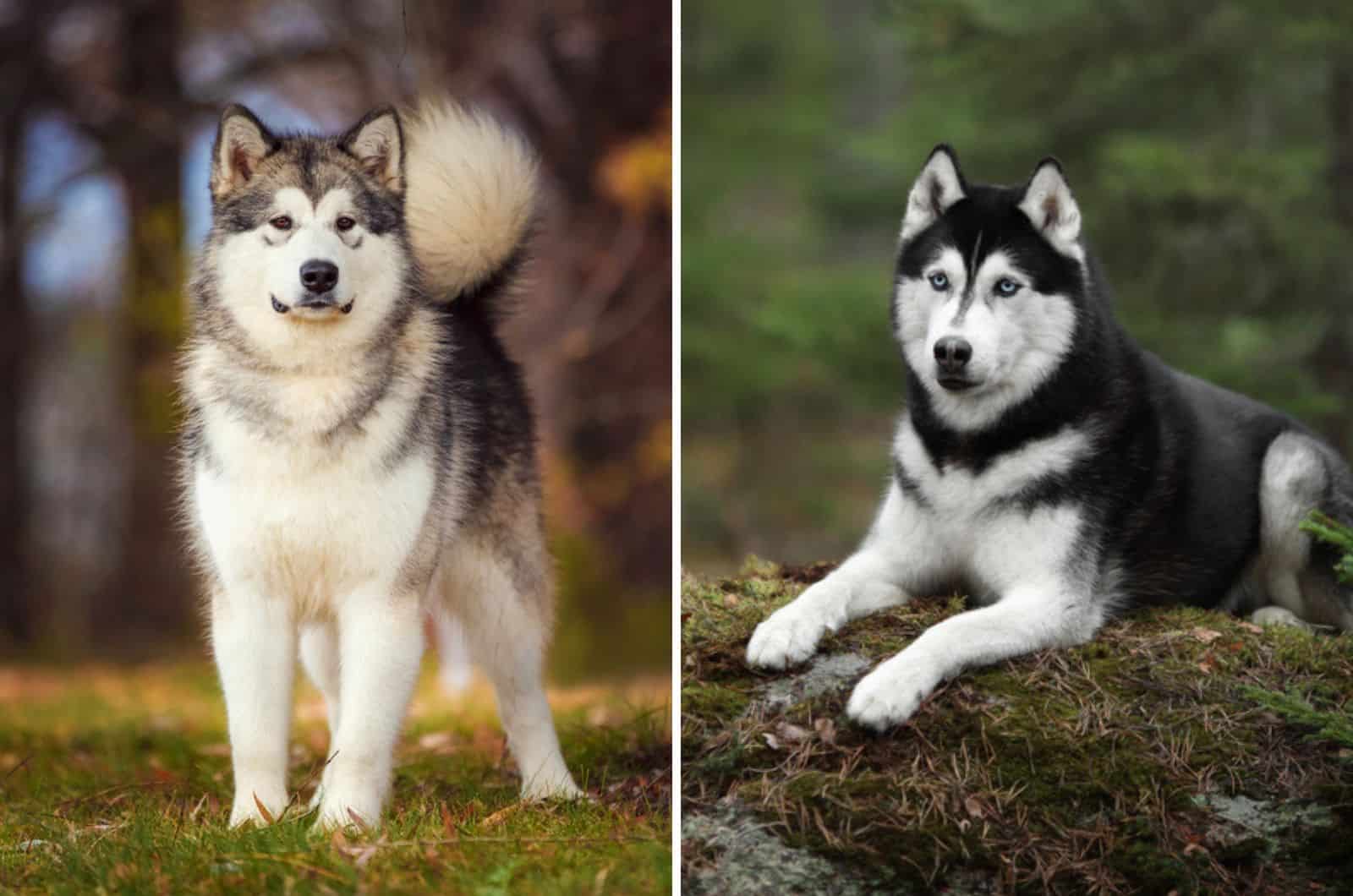Even though to an untrained eye it may seem that these two dog breeds are the same, the truth is – they are completely different.
The battle between the Malamute vs the Husky is never-ending. Both of these canines are excellent working dogs and sled dogs. However, there is a plethora of differences between Siberian Huskies and Alaskan Malamutes.
While they do share the same, thick double coat, and the same initial purpose – their temperament, physical appearance, socialization level, coat color, eye color, and durability differ.
Let’s meet each of these canines individually!
Malamute Vs Husky: A Basic Introduction
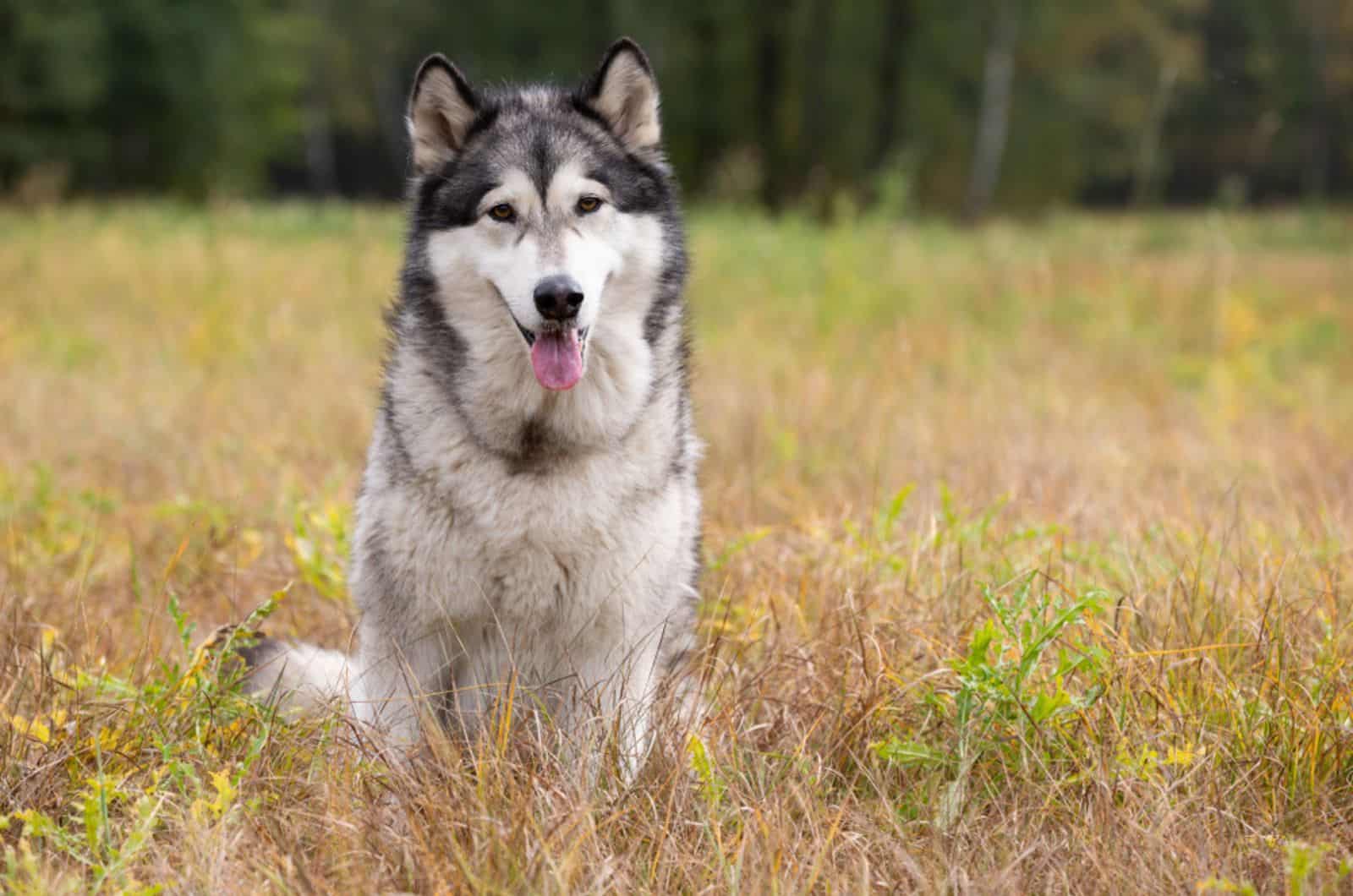
Many people think these two canines have the same origin. However, while Alaskan Malamutes initially came from Alaska, as they were bred by the Mahlemiut Inuit tribe, Siberian Huskies have roots in Northern Asia, or to be more accurate – in Siberia. The latter was initially a member of the Chukchi tribe. The tribe originally comes from Russia.
Both of these dog breeds are officially recognized by the American Kennel Club. The Alaskan Malamute dog breed has been a member since 1935. The Siberian Husky breed has a little bit longer in the AKC tradition, as it was recognized five years earlier – in 1930.
Another thing that these two large dogs have in common is that both of these canines qualify among the healthiest dog breeds in the world. These spitz breeds have great stamina, a muscular physique, and they can endure severe climate conditions.
Their initial purpose was to be a sled dog and a working dog. Their excellent physique and stamina were used for carrying heavy loads over long distances.
Both breeds are quite popular in America, Canada, Russia and China, and Europe. However, Siberian Huskies are probably slightly more famous.
Now, let’s see what the key differences between Alaskan Malamutes and Siberian Huskies are!
[table id=667 /]
Malamute Vs Husky: Physical Appearance
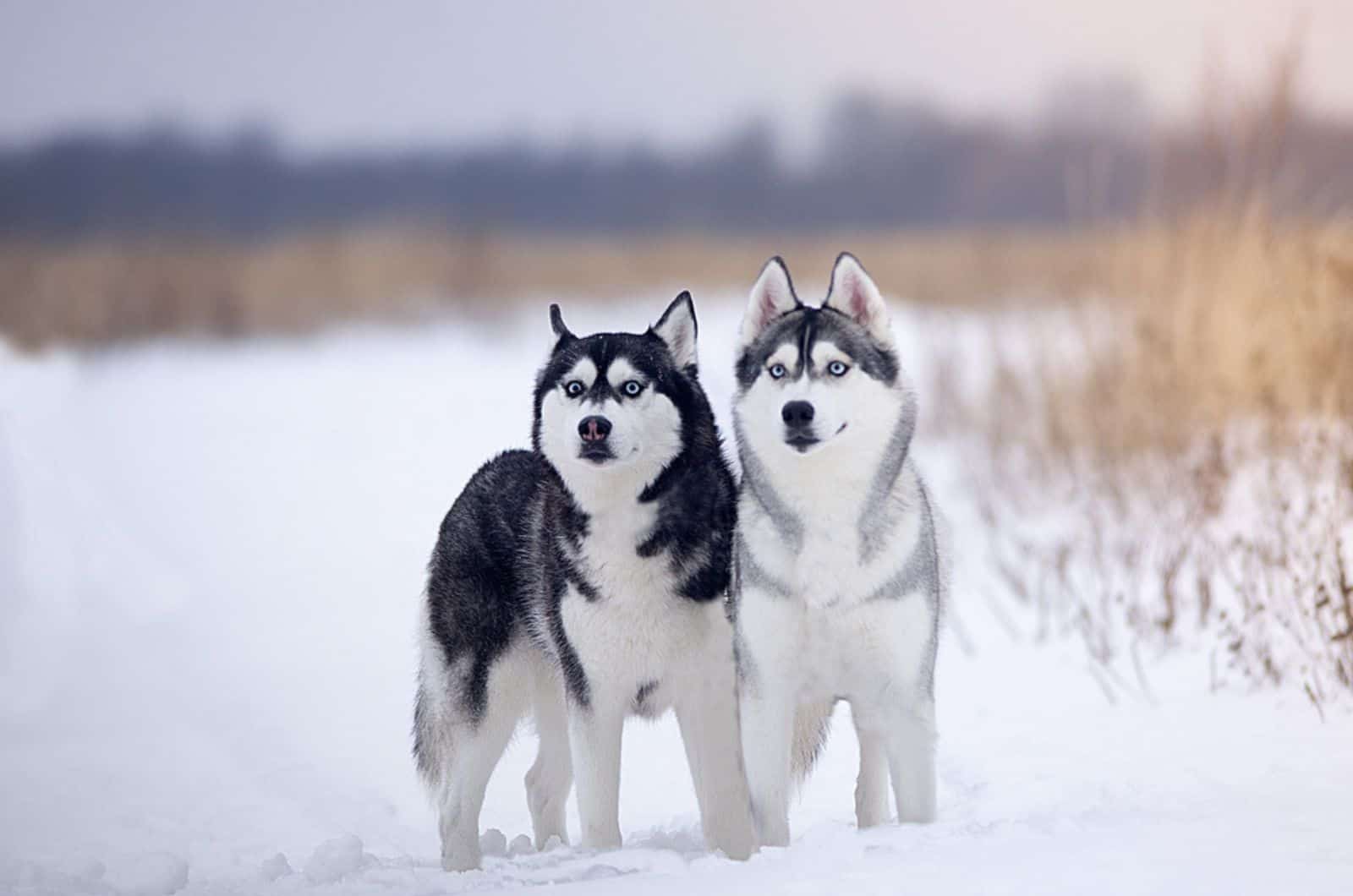
Malamute
As we can see from the chart above, the Alaskan Malamute dog breed is much bigger, as they weigh around 85 pounds. Even though this isn’t the tallest dog breed in the world, the breed is quite large.
These Arctic puppies are magnificent in their appearance, as they have a medium-long, double coat, which is fluffier in respect to the one of Siberian Huskies.
Mals have a white underbelly, as well as Siberian Huskies. However, their eyes are exclusively brown, which is not the case with Siberian Huskies. This is quite a popular dog breed in the Arctic countries.
The dog’s excellent physique and exquisite strength have been used for carrying heavy loads all over the North. This is initially a sled dog with a strong, muscular body. However, more and more of these puppies have been adopted outside the Arctic.
Nowadays, Mal dogs are mainly used as family dogs or watchdogs in households.
Read Also: 9 Alaskan Malamute Colors That Will Take Your Breath Away
Husky
On the other hand, Siberian Husky puppies are significantly smaller, as they weigh around 45 to 60 pounds. The breed is up to 22 inches tall.
Still, these large canines have a high prey drive and excellent stamina. Even though Alaskan Malamutes may be stronger, Siberian Huskies are probably more durable. They have an athletic body physique, and their energy level is much higher when compared to Alaskan Malamutes.
These high-energy dogs pull sleds easily, and they have been used for carrying light loads over long distances. On the other hand, Alaskan Malamutes have been used for shorter distances.
Huskies have a double coat of medium length. They are famous for their blue eyes, but the breed also has brown eye-coloring.
Both male and female Huskies are friendly dogs known for their occasional stubbornness. The breed is famous for its black and white, or brown and white coat. However, there are numerous agouti Huskies and white Huskies who get more and more attention.
Malamute Vs Husky: Temperament
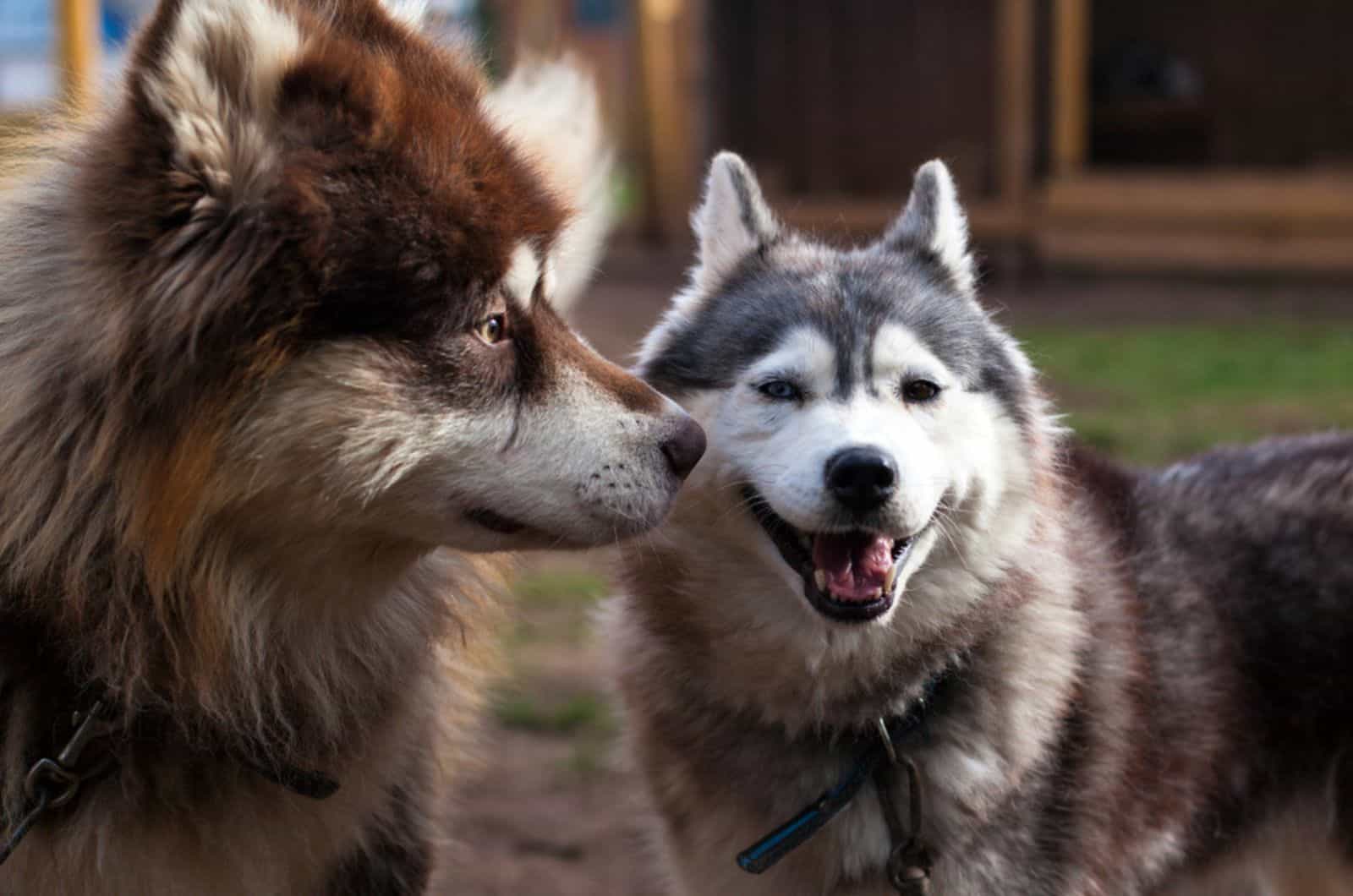
Malamute Temperament
In the battle between the Alaskan Malamute vs Siberian Husky – there are no clear winners or clear losers. However, when it comes to temperament, Malamutes are probably slightly higher maintenance than Huskies.
The reason could be the fact that Mal dogs are more pack animals than Huskies. They demand early obedience training, as well as early socialization.
The breed can be quite aggressive if not properly raised from an early age. In fact, the Alaskan Malamute belongs to the club of the most aggressive dog breeds in the world.
However, breeders use their exquisite intelligence to train them to be excellent family dogs. Even though the breed can appear as stubborn, Mal dogs are quite affectionate, and they love hanging out with their owners.
Positive reinforcement is key when it comes to Alaskan Malamute socialization. The breed is quite reserved and independent by default. They need long hours of work in order to be fully socialized.
It is quite hard to find a good Malamute breeder, considering that the breed has been almost extinct due to a gold rush in Alaska. However, reputable breeders will make sure the Mal bloodline is tested prior to breeding.
However, once you succeed, you will have a lifetime partner that is eager to protect you at all times.
Husky Temperament
On the other hand, Siberian Huskies display much friendlier behavior in respect to Mal puppies. Huskies are outgoing and social by default, and they are not as good watchdogs as Alaskan Malamutes.
Still, these puppies have a high prey drive, which is why it is not a good idea to have other pets in your house unless your puppy is socialized from an early age.
Huskies also need early obedience training, as they can become quite stubborn. This sled dog breed requires a lot of exercise during the day. Otherwise, they can become self-destructive, which is something you don’t want in your Husky puppy.
Huskies are affectionate, loving and highly dependent on their owners. The breed doesn’t like being on its own, which is not the case with Alaskan Malamutes. Huskies can suffer from severe separation anxiety
In order to become a Husky owner, you need to consider your daily plan carefully. If you’re always away from home, or you’re too busy to engage in a Husky daily routine – don’t get one.
The Husky is AKC recognized, but also a proud member of SHCA (the Siberian Husky Club of America).
Malamute Vs Husky: Socialization
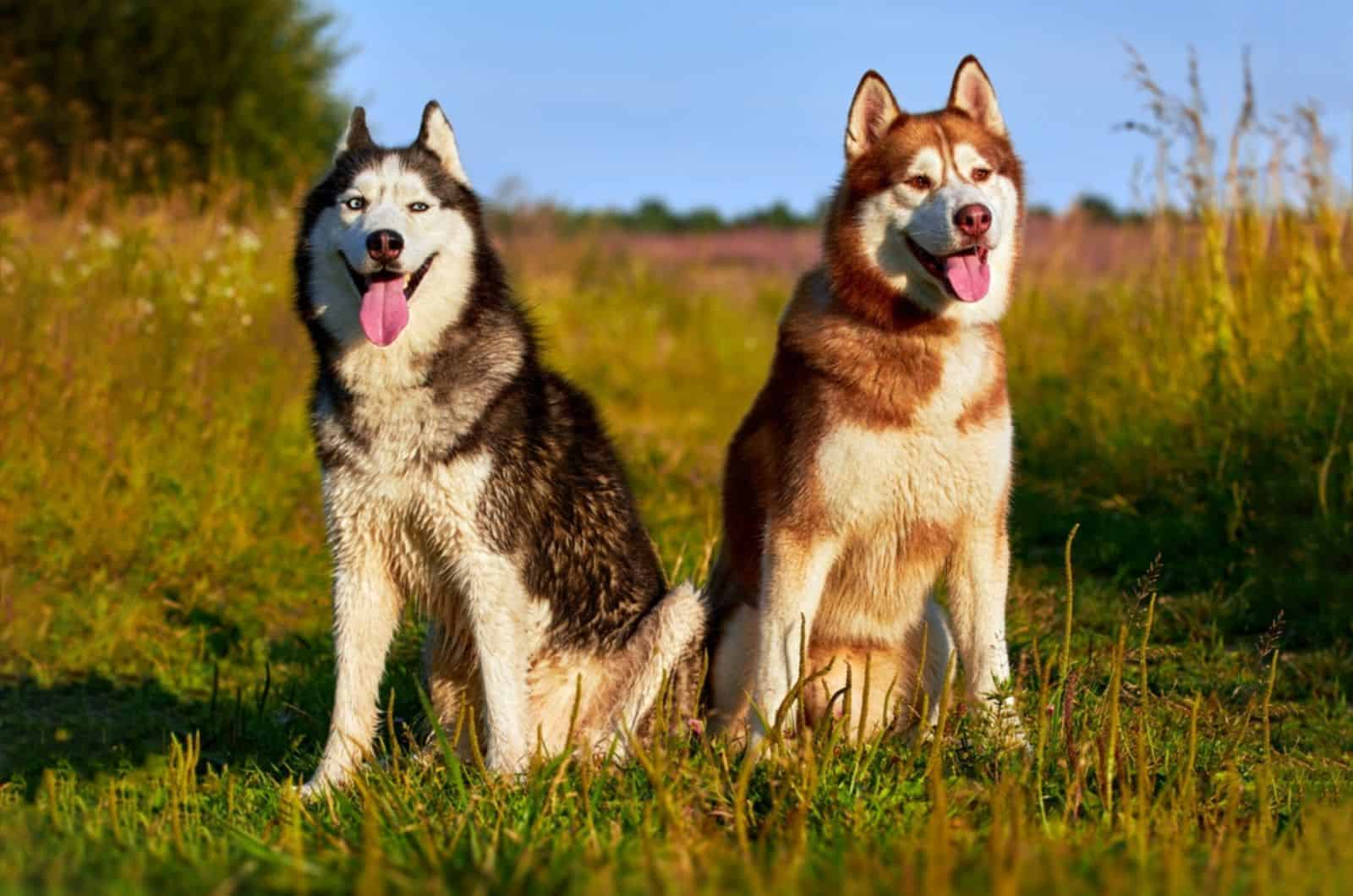
There is something about these dogs that makes you want to purchase them immediately. Both Huskies and Malamutes are quite popular among dog lovers.
Even though these purebreds can sometimes appear as stubborn, or aggressive, they are mainly good family dogs.
Huskies are easier to socialize, as they are outgoing and social by default. On the other hand, early socialization training is a must for Alaskan Malamutes. These puppies originated from wolf-dogs, and they can be aggressive at times.
However, properly socialized Malamutes are excellent family pets and great human companions.
Huskies are preferred as in-house dogs, as they show great dependence, and they love being cuddled. On the other hand, Malamutes enjoy an outdoor setting more, as they need some time for themselves. Malamute puppies are independent dogs that do well in solitude.
That, though, is not the case with Siberian Huskies. Siberian Huskies prefer a crowded environment with as many people as possible. This may have something to do with the way they have been raised throughout history.
Huskies have been operating in packs, while Malamute dogs have been pulling heavy sleds alone, or with fewer packmates.
Both breeds need early socialization and obedience training. The Malamute or Siberian Husky feeding charts need to have occasional treats included. Treats are an excellent way to implement positive reinforcement in these dogs’ training process.
Malamute Vs Husky: Trainability
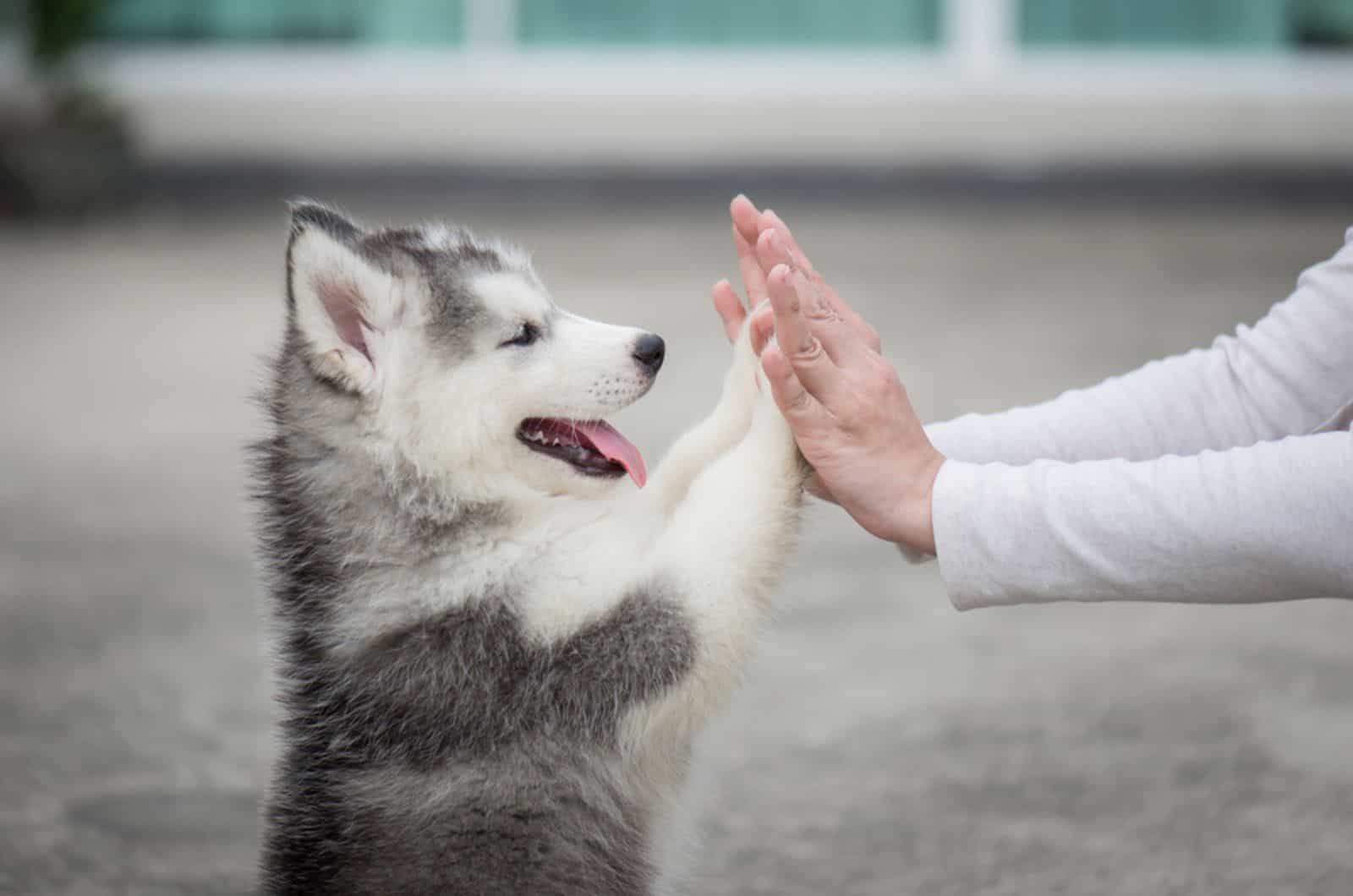
Malamute Trainability
Alaskan Malamutes are known to be excellent guard dogs. They have a high prey-drive which makes them always on alert.
Even though this isn’t exactly the easiest dog to potty train – Alaskan Malamutes are quite intelligent and their trainability level is high. Puppies are known to be contestants in AKC agility and conformation shows.
On the other hand, they perfect tasks easily, as they enjoy pleasing their owners. Malamutes have a long history of being working and sled dogs. The breed is not as active as the Siberian Husky breed, but they too require plenty of exercise during the day.
Just like other large dog breeds that also make good family dogs – Alaskan Malamutes are playful and they love spending time outdoors. That’s why it is highly recommended to take your Mal puppy out at least twice a day.
Otherwise, the breed can display destructive behavior.
Husky Trainability
Huskies of all sizes, including Miniature Huskies, are highly trainable, too. However, they can display stubborn behavior from time to time. Also, Husky puppies are much more energetic than Alaskan Malamutes, which can give dog owners an occasional headache.
They are harder to control, and they tend to escape from the backyard. Huskies’ athletic body allows them to run fast, which is why it is almost impossible to catch them once they decide to disobey you.
That’s why the use of a collar and a leash is highly recommended once you take your Husky puppy out.
Huskies’ stubbornness is something that you need to deal with from the puppyhood stage. Early obedience training is highly recommended.
Huskies can be mischievous, but in a funny and sassy way, which is why you can’t be mad at them, ever! Huskies use their exquisite intelligence to outsmart their owners and to get their own way.
However, Huskies are good family dogs, and they love pleasing their owners most of the time. Even though this is a large dog breed that weighs almost 60 pounds according to breed standards – Huskies act like spoiled children and they adore cuddling with their owners.
In a nutshell, Huskies are good dogs whose trainability level is moderately high. However, in comparison to Alaskan Malamutes, Huskies lack obedience, and they are not as trainable as Mal puppies.
Malamute Vs Husky: Health Issues
Malamute Health Issues
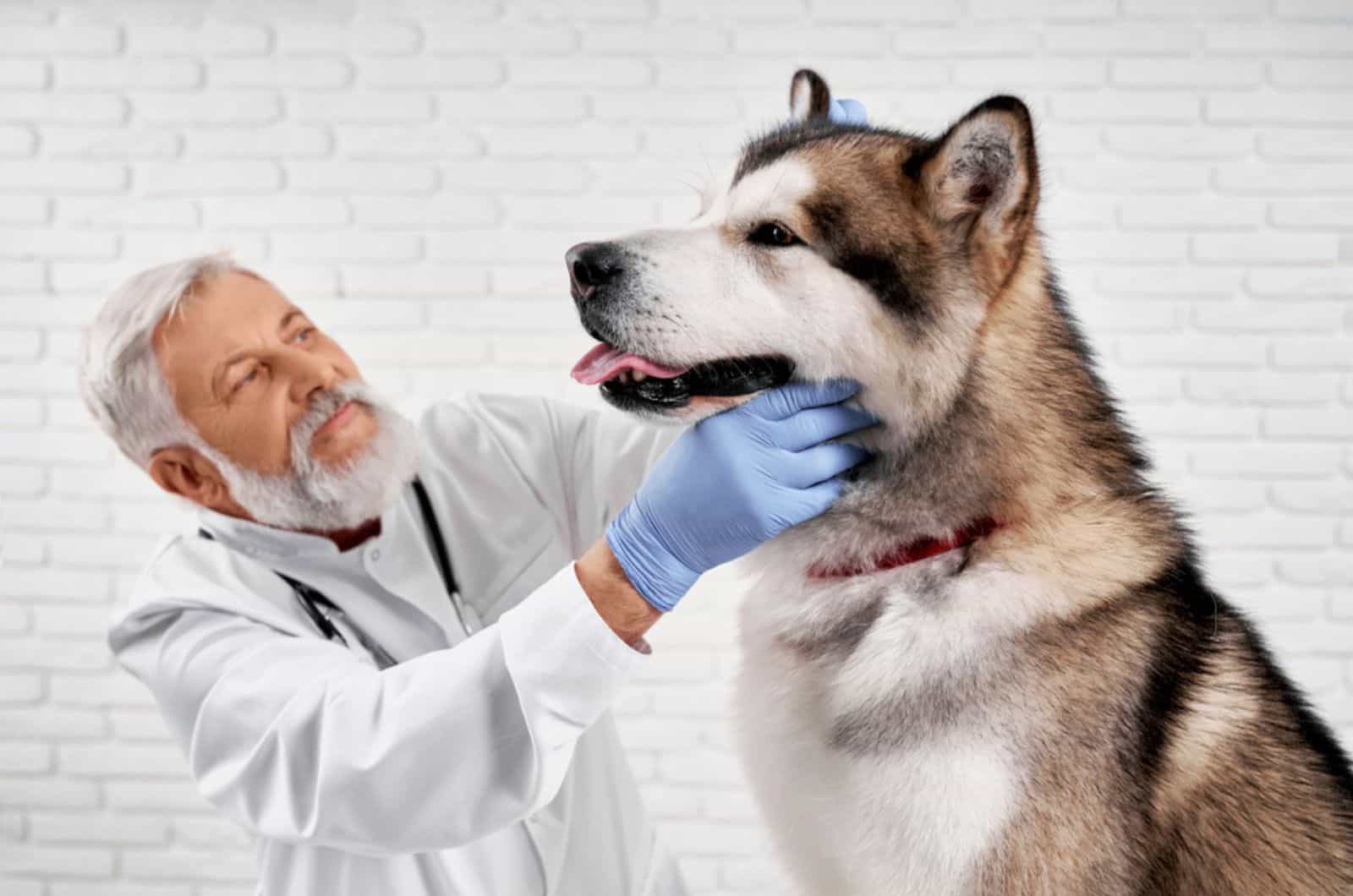
Malamutes, as well as Siberian Husky puppies, are quite healthy. Their undercoat helps them endure pretty low temperatures and severe climate conditions.
This puppy generally doesn’t have any major problems. However, according to the Alaskan Malamute Club of America, Alaskan Malamutes are sometimes prone to hip dysplasia, hypothyroidism and cataracts.
Also, just like any other large dog breed, Malamutes can suffer from bloat, medically known as Gastric Dilatation Volvulus.
Hip Dysplasia
Hip dysplasia in dogs is something you can avoid if you pick a reputable Alaskan Malamute breeder. This hereditary condition develops during the puppyhood stage most of the time. Breeders will notice irregularities in the puppy’s hips once they turn six to eight weeks of age.
Hip dysplasia is not a deadly condition, but it decreases their overall quality of life, as puppies that suffer from dysplasia are unable to properly run, jump, or walk.
Hip dysplasia is not painful most of the time. However, other symptoms related to this health condition are lack of mobility, general disinterest, and a bunny walk.
This condition can be treated surgically. In fact, surgery is highly recommended, as Malamutes with hip dysplasia are most likely to display self-destructive behavior. Hip dysplasia disables Alaskan Malamutes from using their full potential, which can be frustrating.
Hip dysplasia surgery is not that cheap, though. The average price of this surgery revolves around $1500 to $4000. However, it pays off in the long run.
Hypothyroidism
Hypothyroidism can be a pretty serious issue. Its origin is mostly unknown, although the condition is most of the time hereditary and related to a puppy’s immune system. It happens once the thyroid glands become underactive.
Hypothyroidism is manifested in lethargy, lack of energy, general disinterest, sudden gain weight and strength loss.
This condition is not only related to Alaskan Malamutes, but to all Alaskan Malamute mixes as well. As soon as you notice one of the above symptoms, the advice is to seek veterinarian help.
Unfortunately, this condition is not totally curable. However, there are medications that can help treat your dog’s symptoms.
Cataracts
Cataracts in dogs are related to both Malamutes and Siberian Huskies. If you, by any chance, notice a change in your Malamute’s lenses – go to a vet. This is a pretty serious issue that could cause blindness.
This progressive disease is related to dogs of all ages. However, you will see cataracts in older dogs more than in puppies.
Cataracts are treatable, but they are only detected during a vet check-up. That’s why regular vet exams are crucial, even though the Malamute puppy is generally healthy and doesn’t display as many health risks as other dog breeds.
Surgery is the ultimate solution for Cataracts. The average price of this surgery is between $2700 and $4000.
Husky Health Issues
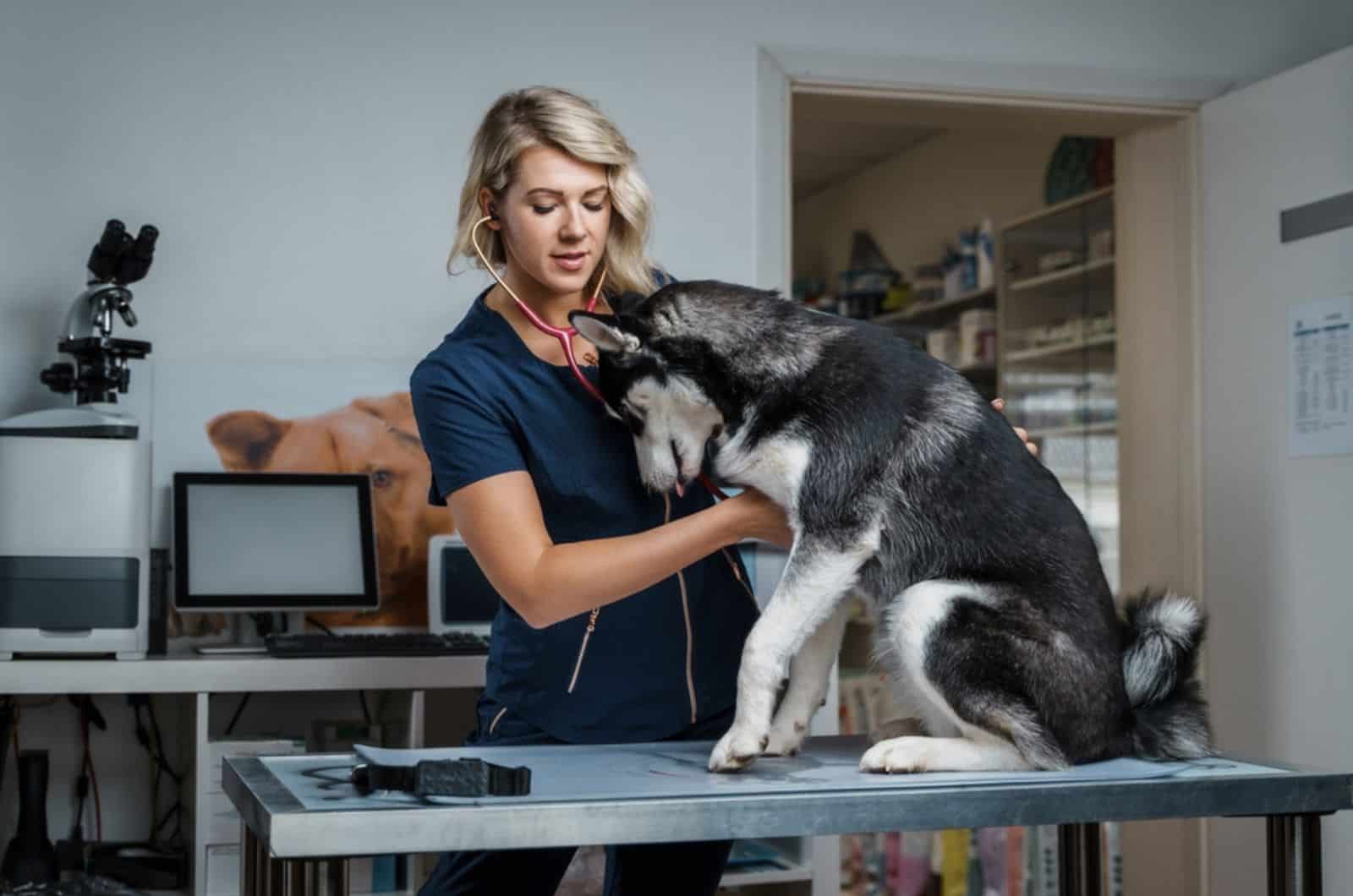
The Siberian Husky is generally a healthy dog breed that doesn’t meet as many health issues as some other dog breeds.
However, the breed requires a regular vet examination, as well as a proper feeding chart. Any reputable Siberian Husky breeder will emphasize the importance of three things: proper feeding, exercising and socialization of Husky dogs.
Siberian Huskies don’t stand being overweight, as obesity makes them inactive, lethargic, and disinterested in any sort of activity. This can cause self-destruction and make your Husky behave undesirably.
Always take care of your puppy’s weight and give your dog the proper amount of exercise during the day. Huskies are extremely active dogs, and they don’t do well being couch potatoes.
However, even the healthiest Husky puppies can face several health issues. Those are hip dysplasia, cataracts, progressive retinal atrophy, glaucoma, and epilepsy.
Hip Dysplasia
Just like in Malamutes, hip dysplasia can be a pretty serious issue for Husky puppies and Siberian Husky mixes, too. This major health condition requires timely intervention, as Huskies that deal with hip dysplasia are unable to perform their regular activities.
Huskies with untreated hip dysplasia tend to have further problems, such as fractures, bone injuries, or spine problems. All these worsen the condition itself, but also cause other major problems that affect your puppy’s overall well-being.
Even though hip dysplasia disables a dog from proper walking, running, or jumping, bear in mind that a Husky puppy will try anything to stay as active as possible. These naturally energetic puppies require a lot of activity on a daily basis, and they won’t give up easily.
That’s why it is important to treat hip dysplasia as soon as possible. Timely treatment will save your dog from other possible health issues.
Cataracts
The same goes for cataracts. Huskies that suffer from this eye disorder need timely vet intervention.
Cataracts are a progressive disease that leave severe repercussions on any dog. Partial, or total blindness is a final result of untreated cataracts.
The disadvantage is that you cannot spot cataracts symptoms, especially if you are a first-time dog owner. However, any unusual Husky behavior is a sign that something is wrong.
One of them is Husky howling. Even though the breed is known to be one of the loudest dog breeds in the world, sometimes their howling or barking can be an alarm that they are in pain or discomfort.
Always pay attention to your dog’s behavior, as it is the best indicator of a possible disease. However, make sure your dog undergoes regular vet exams, too.
Progressive Retinal Atrophy
Progressive retinal atrophy is common for Toy and Miniature Poodle mixes, as well as for Cocker Spaniels, Labrador Retrievers, and Siberian Huskies.
This is also a progressive eye disease that causes blindness in the long run. Unfortunately, there are not many things that you or your vet can do in order to prevent blindness in a dog affected by PRA.
This is an untreatable condition that represents the atrophy of photocells.
However, there are so many dogs that cope with blindness well. Fortunately, other senses in dogs, such as their sense of smell, are well-developed and they allow puppies to live a happy, long life.
If your Husky suffers from progressive retinal atrophy, make sure you create a positive, nurturing environment for your canine.
Additionally, always approach your dog carefully, and from the front, as blindness causes disorientation, and it can make your puppy slightly aggressive to unknown movement.
Glaucoma
Glaucoma represents increased eye pressure in a dog. It can go without any symptoms, so it is pretty hard to detect it without a vet exam. However, there are several symptoms that can occur. The most common symptom is a headache, which is painful and strong.
A dog may start acting weird, which can be a sign that something doesn’t go as planned.
If you wonder do Huskies bark, the answer is – Yes, they bark without compromise. However, they will bark excessively once they feel discomfort, pain, or danger. This is the time you need to react and detect a potential problem.
Glaucoma requires a timely vet reaction. This is quite a serious problem that can have severe repercussions, such as permanent vision loss.
Epilepsy
Epilepsy is probably the most dangerous condition that can affect Siberian Huskies. This is a brain disorder that results in severe seizures.
It can affect both male and female Bernese Mountain dogs, Siberian Huskies, Cocker Spaniels, Boxers, Golden Retrievers, and several other dog breeds.
Epilepsy is related to a dog’s genetics. Other causes of this condition are unknown. Epilepsy in dogs is treated with anti-epilepsy medications.
Dogs that use regular medication live a normal and happy life. However, you need to make sure your dog is always under supervision, as puppies can have seizures everywhere.
Malamute Vs Husky: Which One Is Better With Children?
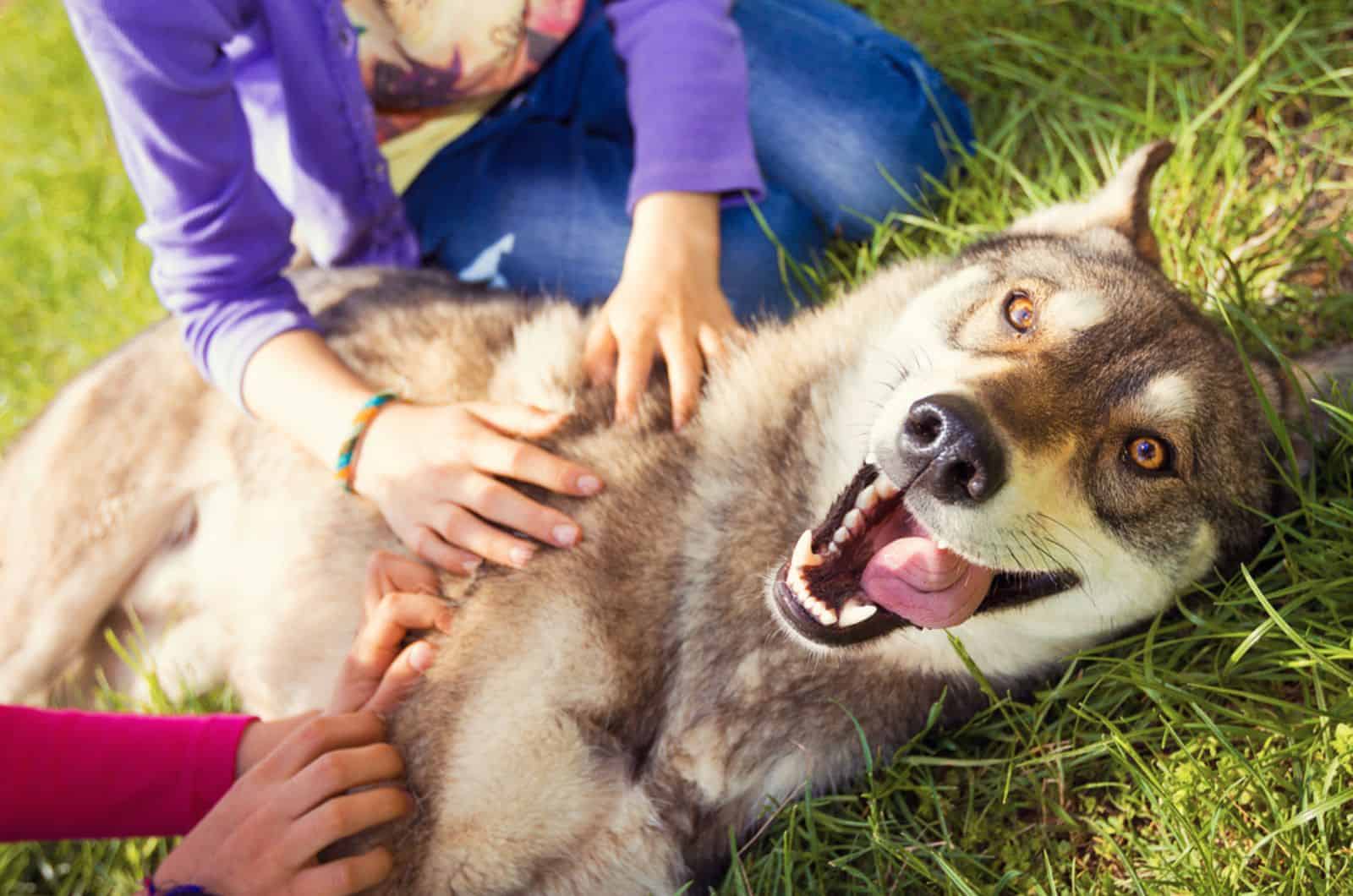
The ‘‘Malamute vs Husky’’ enigma is never-ending. However, in this particular case, we can freely say that Siberian Huskies are much better with small children than Alaskan Malamutes.
This is because Siberian Huskies are a lot more outgoing and social according to the breed standard, which is not the case with Alaskan Malamutes. The latter can display unpredictable behavior around unknown people and other pets.
This is due to the breed’s independent and reserved nature. Malamutes act as pack leaders, even around humans. That’s why they need early obedience training and early socialization.
Socializing an Alaskan Malamute is a long-term process that requires patience, commitment and a lot of positive reinforcement. Dog training collars are excellent training supplements that could help you during the process.
Mal puppies are not recommended for first-time dog owners, nor for families with small children. Even though socialized Malamutes are generally good family dogs, you may want to explore other options if you are an inexperienced dog enthusiast.
On the other hand, Siberian Huskies are typically great with children, as they act like children as well. They love being accompanied by children, as they enjoy creative games and meeting new people.
Huskies generally have a higher level of tolerance with respect to Alaskan Malamutes. They won’t complain if their tail is pulled, or if they are mounted by a kid. Still, early socialization and obedience training are highly recommended.
Is A Malamute Or Husky Better As A House Pet?
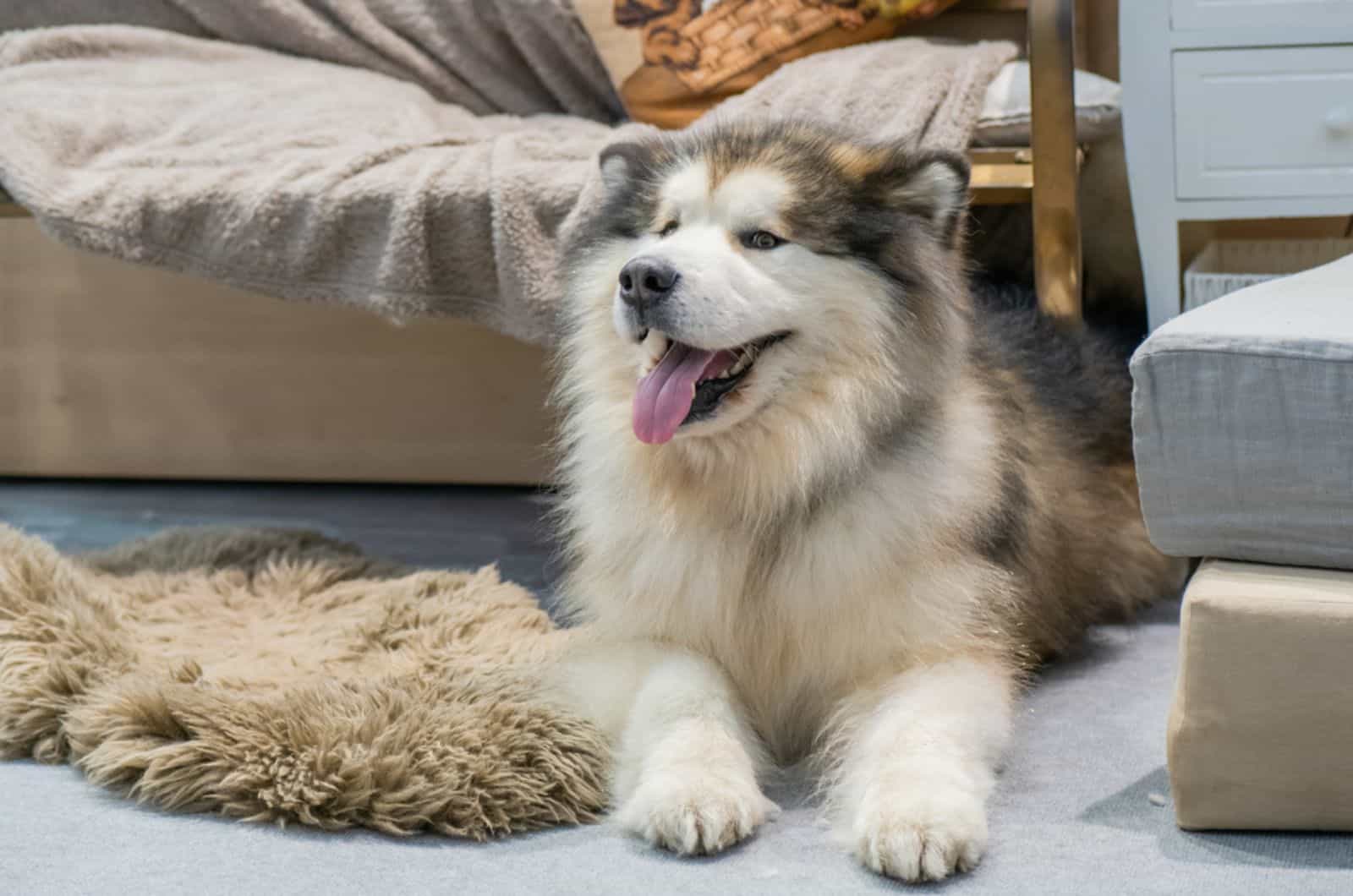
These magnificent dog breeds are excellent family dogs and fantastic human companions as well. They enjoy being around people and working for a bite of delicious food.
However, when it comes to indoor living, Siberian Huskies are probably more prone to an indoor lifestyle than Malamutes. However, both of these dogs, once they are socialized, make excellent indoor companions.
You may want to pay attention to their shedding level, though. We know that Malamutes shed a lot, as their coat is somewhat longer than Huskies’. However, if you wonder do Siberian Huskies shed, the answer is – positive! They shed their undercoat a lot, and this is one of their greatest disadvantages.
Both the Siberian Husky and the Alaskan Malamute require daily grooming. The latter maybe even more so because of its longer coat.
We cannot certainly say which of these dogs is better as a house pet. If you want a dog that is highly affectionate, attached to you and loves following you everywhere – then a Husky is probably the best choice.
On the other hand, Malamutes are more independent, and they won’t have a problem being on their own for a couple of hours.
FAQs
1. Is A Malamute Calmer Than A Husky?
Indeed. A Malamute dog is a lot calmer than a Siberian Husky. It’s just the way they are made. Huskies are dramatic at times, as they have a plethora of emotions that they display in various ways.
Alaskan Malamutes don’t bark as much as Siberian Huskies do. They occasionally use barking as a sign of gratitude, warning, or self-defense. On the other hand, Huskies bark and howl at all times, as they are chattier and they love communicating with their owners.
Another reason why Malamute puppies are calmer is that they have lower energy levels. A Malamute breed is generally strong and has good stamina. However, their energy level is not that high.
On the other hand, Siberian Huskies are true athletes, as they can run for miles and still not feel fatigued. That’s why this breed requires a lot more exercise on a daily basis.
2. How Much Does A Malamute Cost?
The average price of this puppy revolves between $1500 and $3000. This is quite expensive if we compare the price of an Alaskan Malamute with the Siberian Husky’s price. Siberian Husky puppies generally cost significantly less, unless they come in a rare Husky color, or are trained in obedience.
However, the price at reputable breeders is always higher. That’s why paying $2000 for a Malamute dog is probably a better solution than purchasing a Mal dog for less than $1000 at a shady puppy mill.
Reputable breeders will make sure you get a health-tested, AKC-recognized puppy with all the needed documentation. Also, microchips, the first pack of food, a blanket, collar, and a leash, as well as puppy toys are generally included in the overall price.
3. Which Is Better: Husky Or Malamute?
To say that either one of these dogs is better would be a wrong construction. In some things, Huskies are better, while in other things Malamutes show dominance. The Malamute vs Husky dilemma is pretty tough!
Siberian Husky puppies are probably a better solution if you have small children in a house. Their initial level of socialization is higher, as they are naturally dependent, and they love spending time with humans.
On the other hand, an Alaskan Malamute is a better guard dog, as these puppies are fearless, always on alert and they are extremely strong and dominant.
Alaskan Malamutes are highly trainable but initially aggressive. On the other hand, Siberian Huskies can appear stubborn at times, but they are naturally open to strangers and great as indoor pets.
In physical terms, both of these dogs are magnificent. They both have a double coat which is medium length. Their coat color is almost the same. Husky eye colors are more diverse, though.
In a nutshell, deciding which of these canines is better is almost impossible. The choice should be based on personal preferences and your lifestyle.
Conclusion
The Malamute vs Husky battle is long-term. Both of these canines show excellence in certain things, which is why telling whether one is generally better than the other is almost impossible.
Alaskan Malamutes are bigger, more independent, and probably better at being a guard dog. On the other hand, Siberian Huskies are social and outgoing by default, and their adaptability level is higher.
However, both dogs require a deep commitment and a long-term socialization process. Once you achieve that – you will have a life partner that will stick by your side through thick and thin.
Read more: Samoyed Husky Mix: A Hybrid To Fall For.
